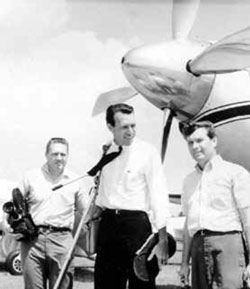I had the Jonestown story back in 1978. As a producer at NBC News, I had worked on a series that year on dangerous cults. I had talked to members of Peoples Temple and to critics like Steven Katsaris, one of the main persons in the Concerned Relatives and father of Maria Katsaris, Peoples Temple treasurer. I had the suppressed story of Gordon Lindsay, the controversial journalist who gave his story to me. I met Debby Layton through Lindsay, and she gave me the affidavit which laid out much of what would happen as early as June 1978, five months before the massacre. And then, as the NBC team was being put together to accompany Leo Ryan to Guyana on his fact-finding mission, I was pulled from the story.
After Jonestown happened, I was the media “flavor of the month” because I, sadly, had been right about what I thought would happen if outsiders entered the lair of Jim Jones unguarded. The late Evan Thomas, publisher at WW Norton, and hotshot agents came out of the woodwork wanting my story. Those were the days when women investigative reporters had a difficult time getting jobs at the television networks. I knew if I told my story to them – that if I named names – I’d never work in the business again. That’s the way it was for women in 1978. So I didn’t.
Still, I knew too much about what had happened at NBC, and I became a pariah. Then-president Les Crystal – now with the Lehrer Report 30 years later – and his executive producer Joe Angotti made that very clear. So when I had a chance to go to ABC News in a comparable position, I grabbed it. The only journalist I told my story to was syndicated columnist Jack Anderson, and that was three years later. By then the story of the year in 1978 was already ancient history.
I maintained my close relationship with Steve Katsaris, Gordon Lindsay, and Debbie Layton. As Katsaris says today with the anger he felt almost 30 years ago: “Everyone in the government knew what was going on. And they let Jonestown happen.” Why? The government succeeded in having this happen by classifying the most important material for 30 years – enough time for the players in this tragedy to die and for people to forget. I never forgot. But would the classified documents tell us? In some ways, I doubt it.

NBC News has destroyed all but 18 minutes of the tape cameraman Bob Brown died getting. I saw every bit of that film that November. Almost three hours. Some of it may have been stolen in Georgetown, Guyana, I learned later. By whom, I don’t know. I saw Temple followers not wanting to be taped being taped. I saw reporter Don Harris conduct a Mike Wallace-type slash-and-burn interview with a paranoid, drug fueled madman named Jim Jones. The segment – repeated so often that it is almost iconic – in which Jones implores the congressional delegation and the news crew to leave them alone is only a fraction of the interview and came at the end. The last straw. It was shortly after that that Jim Jones destroyed a grand vision in his madness and called it “revolutionary suicide.” Most of the people were murdered because of a madman’s delusions.
Last year, more than a quarter century later, I thought the time had come – finally – for me to write about what I knew: my “insider” story of the media’s role in the massacre had to come out at last. What I learned sadly was that the literary world considered the tragedy of Jonestown to be old news. Exposés, insider accounts, detailed histories, analytical works, none of them have sold very well. After Watergate, Iran-Contra and now Iraq, who believes or is surprised what the government does.
So, I have run into a stone wall. My last agent begged off the project. No one cares anymore. But I care. It is as much a mystery now as it was then.